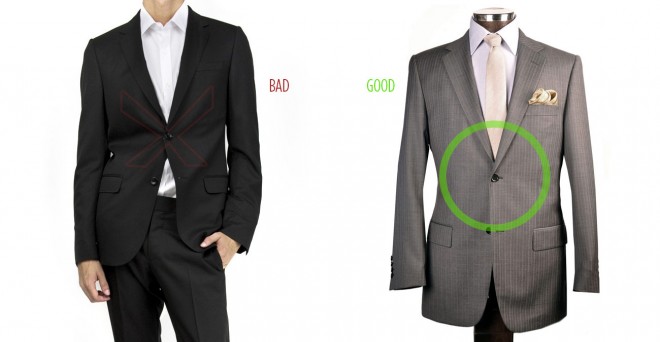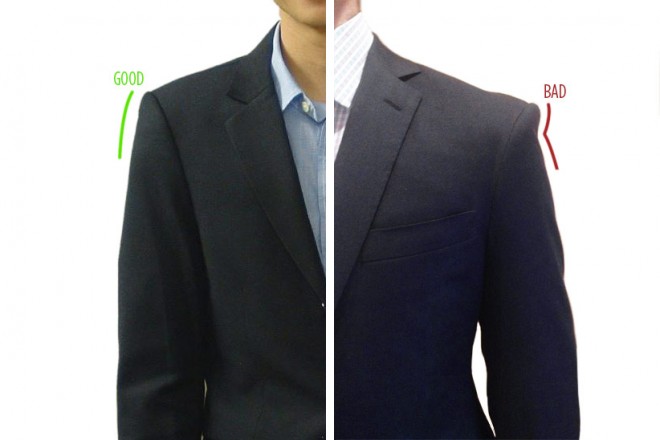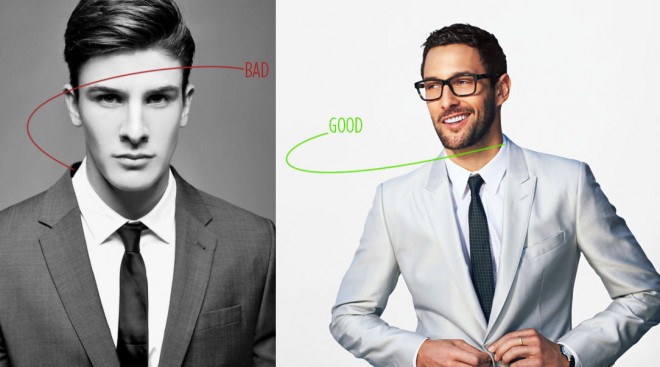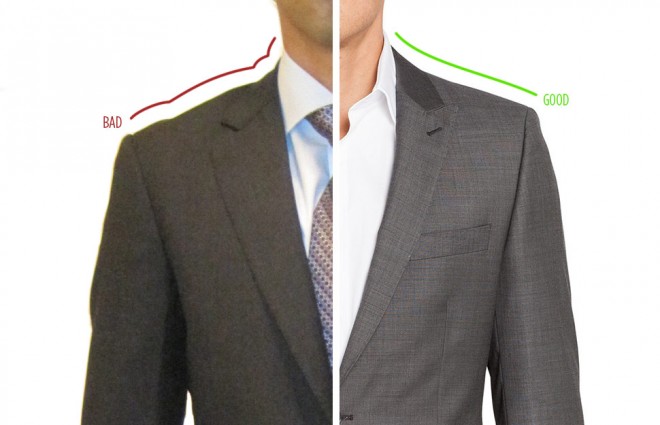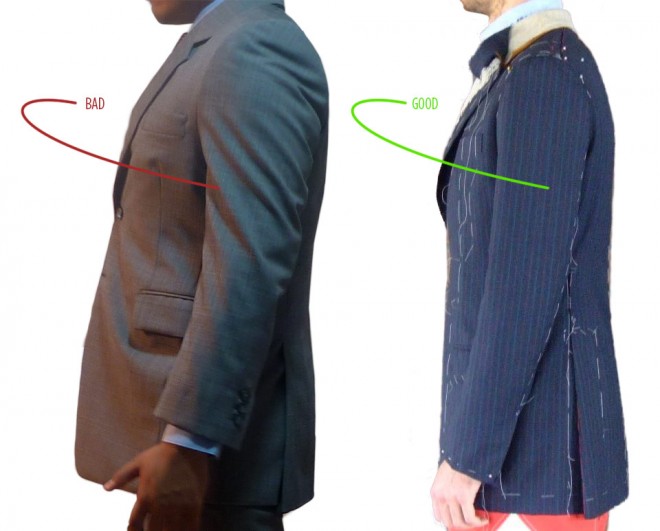How should a sport coat fit, exactly? In this article, we’ll cover a few lesser-known indications of poor fit. Hopefully the next time you’re out shopping for a suit, you can recognize these problems in the mirror and either swap for a different size, or shop at a different store, if necessary.
In the beginning of your style improvement journey, you may want to add a suit or sport coat to your wardrobe, but since it’s a bigger expense, you want to make sure it fits right.
But it’s important you school yourself on the finer details, especially if you want to start wearing sport coats and suit jackets more regularly.
I always stress the importance of fit, and nowhere is poor fit more obvious than in suit jackets and sport coats.
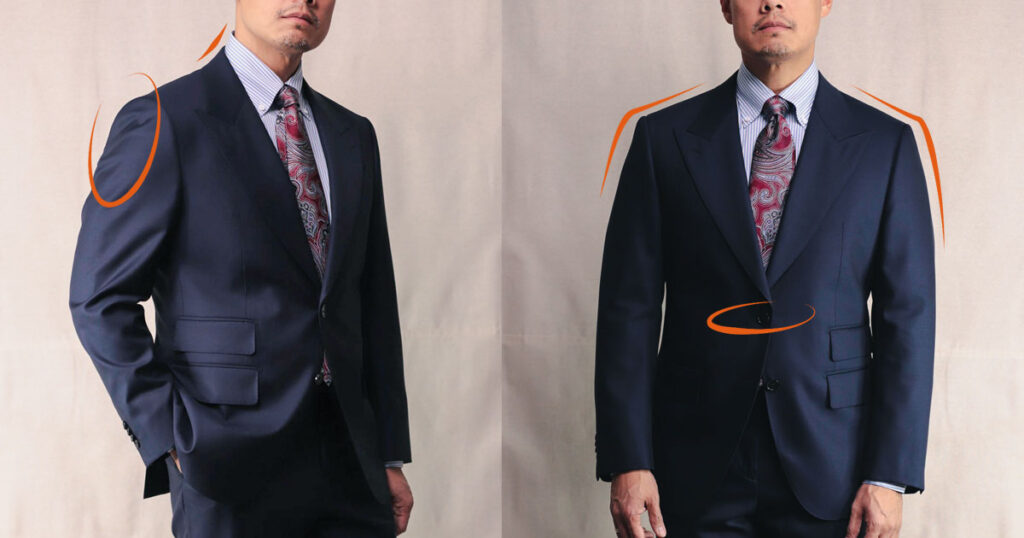
First: Is Bespoke or Custom The Only Way To Get Great Fit?
There is a reason why full bespoke
The benefit of this? A garment that fits like a second skin, something that masks bodily imperfections (e.g. uneven shoulders, odd shape, broad chest, large gut, etc.) and enhances your best features.
What’s not so great? An empty wallet, for one. Bespoke
Nevertheless, going bespoke is one way to avoid the most common problems I’ve listed below. In case that isn’t an option for you, well… read on and we’ll figure out a workaround.
Two Very Obvious Signs Of Bad Fit
You may already know of these telltale signs. When trying on
Bad Fit Sign #1: The Dreaded X
Put on your favorite sport coat and button the top button (or the middle button if it’s a three-button).
Does the fabric pull at the fastening point, forming an X with the wrinkles? This means the jacket is too snug.
There should be no pulling where your jacket buttons. Some trendy, fashion-forward
Do the test: One open hand, palm down, should fit between your buttoned jacket and your
What’s the solution For The Dreaded X?
Go up a size, and have the tailor take in the body to fit you perfectly.
If you’re going up a size, the shoulders may be too big. If that’s the case, stick with your size (so the shoulder fits) and see if a tailor can “let out” the jacket to accommodate your stomach.
Alternatively, try different suit cuts, or completely different brands (e.g. “traditional” cut instead of modern cut, which tends to have less waist suppression).
Bad Fit Sign #2: Shoulder Divots
Three main reasons why shoulder divots form:
- The suit jacket’s shoulders are too big and extend past your natural shoulder. It becomes extremely visible right below the shoulder seam when you lift your arms even slightly.
- The wearer has sloping shoulders or a slightly hunched-over stance, but the jacket is constructed with more square shoulders, or designed for a man with an upright stance.
- The jacket’s armholes are too small or shaped differently, relative to the size and shape of the wearer’s arm.
For a more in-depth explanation, in case you wanna nerd out, check out this forum post on Styleforum.
The most common test for correct shoulder fit: With your jacket on and arms at your side, touch a wall with your arm like you’re about to lean up against it. You should feel the padding touch the wall, followed almost immediately by your upper arm. The jacket should follow the lines of your body smoothly.
What’s the solution For Shoulder Divots?
If you’re seeing shoulder divots, you need to try on different jacket fits, or different brands completely. For instance, you could try a brand’s traditional cut suit instead of their slim cut, and see if that helps with the issue.
If you do the shoulder pad test and the jacket’s shoulders are too wide, go down a size, and / or try on other brands that have a more relaxed, less structured shoulder.
Three More Signs of Bad Suit Jacket Or Sport Coat Fit
Here’s where things get interesting. You probably have heard of the X and shoulder divots before, but I’m about to list a few things you may not have considered. Pay attention.
Bad Fit Sign #3: Collar Gap
Also known as Prole Gap (go look that one up), collar gap refers to the gap between the back of your
Your jacket’s collar should follow the line of your
What causes collar gap? A few possibilities here.
- The jacket doesn’t fit in the chest and / or back
- The neck of the jacket is cut too big for your body shape
- You may have forward-leaning shoulders (if you slouch a bit) and the jacket was constructed for someone with a more neutral, upright stance
- One of your shoulders may be lower than the other (more common than you’d think)
This is why proper shoulder fit is monumentally important when it comes to suit jackets and sport coats. Take a long look at the collar area and see if there’s any gap.
In fact, check right now, with the suit hanging in your closet. Put on the jacket and see if you recognize any collar gap. It’s one of those things that once you see, you can never un-see, especially when looking at other guys in
What’s the Solution For Collar Gap?
Going bespoke or custom. Alternatively, trying on many, many different jacket models from various brands to see whose drape and general construction works best for your body.
The more I pay attention to collar gap, the more I wonder if this is ever 100% avoidable, to be honest.
More information on collar gap
- Via Put This On
- Via Parisian Gentleman
Bad Fit Sign #4: Weird Shoulder Rumpling
This is somewhat related to the shoulder divot, but is noticeable at the top of the shoulder, from the lapel all the way to the sleeve cap. Rumpling can happen when the jacket’s shoulders are too big for the wearer, or if the jacket wasn’t constructed to accommodate the wearer’s natural stance.
It could also appear when the wearer’s actual shoulders don’t fill out the jacket’s shoulder area. This causes the fabric to dip, collapse, or display a generally wrinkled appearance.
Always remember the line that forms atop your shoulders and down your arms should be as smooth and uninterrupted as possible.
What’s the Solution For Shoulder Rumpling?
Try on a few jackets from a few different brands. Some jackets are made for men with a more upright stance or straight shoulders, while others can be more forgiving.
Keep in mind, though, that sometimes, it’s simply unavoidable when buying off-the-rack
I’ve tried on many jackets that fit perfectly in the shoulders and body, yet I still get a bit of rumpling. Do the best you can.
Also remember that the amount of padding will affect the shoulder’s smoothness. If your jacket fits well and has a really structured shoulder, you should see less rumpling. If you have an unstructured, unpadded jacket, you may see more, but that’s just the nature of the garment.
Bad Fit Sign #5: Sleeve Pitch
Sleeve pitch refers to the positioning of the jacket’s sleeve relative to your arm’s neutral position. You can expect wrinkling in the sleeves as you move your arms around, but if you find wrinkling when in a neutral stance, there’s a good chance your sleeve pitch is off.
Not everyone’s arms and shoulders have the same neutral position, and wrinkling can occur if both the sleeve’s positioning and the arms’ neutral positioning don’t sync up.
If you’re in the market for a new suit, pay attention to the fabric when you are standing straight with arms at your sides. Check out a side view, and a back view of yourself if possible. If there’s wrinkling at the arm, you should try on a different jacket, model, or brand.
If you already own a suit and noticed excessive wrinkling when your arms are in neutral position, sleeve pitch can be fixed. But, as with all a tailor’s alterations, it comes with a price.
What’s the Solution For Incorrect Sleeve Pitch?
Hopefully you can find a brand whose jacket construction has the correct pitch, but if not, you have to take it to a tailor.
More on sleeve pitch
- Via Put This On
“How can I avoid all these sport coat fit issues?!?”
Option 1: The best solution I can suggest, other than going fully bespoke, is to simply try on many, many jackets. You’ll get the feel for correct fit and what brands and models suit you best (ha! pun.)
Option 2: Go to a high-end department store with knowledgable salespeople (Neiman Marcus, Barney’s, etc.) or a high-end men’s boutique specializing in
The “knowledgeable salespeople” bit is important. Here’s why.
If you do this, be honest with the guy. Tell him you’re interested in learning about properly-fitting
Ask him for his help and opinion as to what looks best. Most good sales guys will be happy to exhibit their vast knowledge of proper fit.
You can be upfront with the salesperson if that makes you feel better. Tell him that you’re not planning on buying today, but wanted to try jackets on so you know what fits you best.
Option 3: Do the best you can on your own, take good full-body photos, and hit up Styleforum and see what those guys think. Lots of them are experts (or regular guys with tons of experience with
After you’ve exhausted all those options, even if you get seemingly good advice, take it all with a grain of salt.
There’s rarely one perfectly correct answer, and that “expert” may have given you advice based on his personal preferences, not necessarily what looks best on you.
The best way to learn, is to take the advice of several different knowledgeable people, then make your own decision as to what you like, what feels comfortable, and what you think looks good.
You’re bound to change your mind down the road anyway, as you continue to learn and get better at judging your own style.
Do you recognize these signs of bad sport coat fit?
I hope this helps you recognize signs of improper fit the next time you’re out and about shopping for a suit. Now that you’re aware, your shopping experience should be much better.
If there’s one thing you take away from this article, I hope it’s this: Everything should be smooth. Smooth, clean, fluid lines, from the shoulders all the way down to the hem.
If you pay attention to how the jacket drapes (i.e. lays) on your shoulders and body, it should be smooth. No crazy wrinkling, no mountains of puckering fabric, no fabric tugging at the fastening points.
Was that helpful?
Have you bought a suit or sport coat recently, or are you looking to buy a suit soon? Did you look for these signs of bad fit?
If you have any questions or comments, hit me up on Twitter. You can also find join other readers on Effortless Gent’s Facebook page, or DM me on Instagram!

